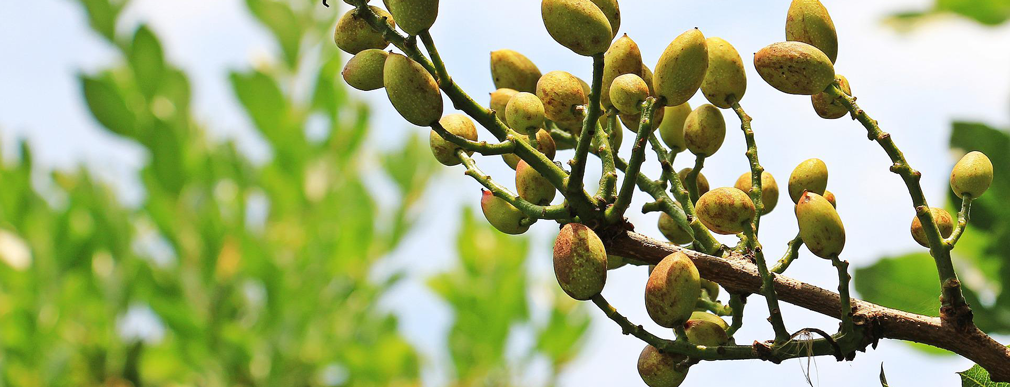
Cracking into the Pistachio Industry in Arizona
A few weeks back, Sphinx Date Co. took a closer look at the pecan industry in Arizona and now the company is looking into another one of its popular products that are also produced in Arizona — pistachio! Sphinx takes a look at the history of pistachios in Arizona, and the benefits of this “tough nut to crack.”
A tree nut crop native to Asia, pistachios have become more popular in recent years thanks to some clever marketing and their dropping price point due to increased production. The United States is the top producers in the world, and pistachios are produced almost exclusively in California with Arizona and New Mexico following behind. According to the Arizona’s Tree Nut Industry and its Contributions to the State Economy by Dari Duval, Ashley Kerna Bickel, George Frisvold and Stephanie Perez of the University of Arizona College of Agriculture and Life Sciences Agricultural and Resource Economics and Cooperative Extension, “Because California dominates U.S. pistachio production, annual price and production data are most readily available for California. Value of production has increased significantly since the early 2000s, and grower price received has generally fallen as production has increased.”
Pistachio trees are hearty ones, but they do require the proper attention to grow and flourish. They are alternate bearing, which means that one year will offer strong production, and the following year, very little. Southeastern Arizona is home to most of the pistachio trees in the state — approximate 4,500 acres worth. According to the report, “Arizona ranks among the top four states in its production of pecans and is one of only three states with commercial production of pistachios.”
Combined, pecan and pistachio production in Arizona is among the state’s top ten agricultural cash receipts — and these nuts’ popularity is only growing. According to the report, state cash receipts point to the fact that these tree nuts will increase in the coming years.
Of the 343 Arizona farms that produce tree nuts, 69 produce pistachios with the remaining 267 producing pecans. However, good news for pistachio lovers is this: “Per capita utilization of pistachios in the United States has grown significantly from the early 1980s, increasing from roughly 1/20th of a pound per capita to nearly half a pound per capita for the 2017/2018 marketing year.
Pistachios are usually harvested between late August and early October. After being harvested the nuts are cleaned and transported to be processed for marketing or storage. Generally, pistachios are marketed to consumers in split-shells, making them easier to crack (and after all, isn’t cracking them half the fun?) Pistachios are also a great nut because their shelf life is up to a year in cold storage and about 68°F. Environments with relative humidity are prime for expending pistachios’ shelf life.
Pistachios are great just for cracking and eating, but they are also delicious for use for both sweet and savory recipes. Crushed, they make a great coating for baked or fried chicken or fish; they can also be pureed into a pesto, paired with goat cheese, honey and toasted bread for a yummy appetizer or as part of a charcuterie plate. There are endless ways to enjoy the pistachio, one of Arizona’s home grown nuts! Get some at Sphinx today!
